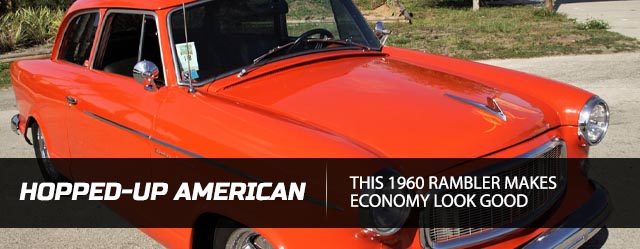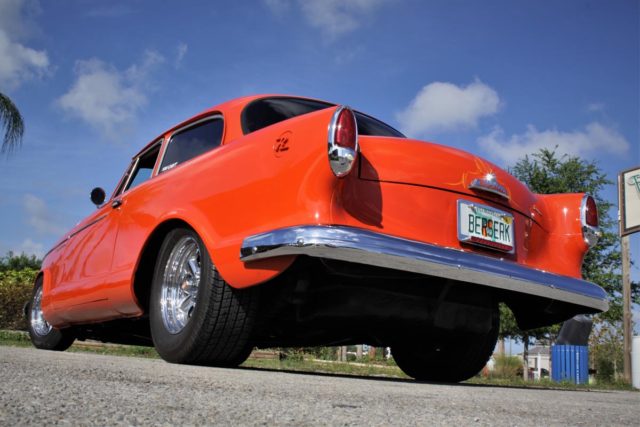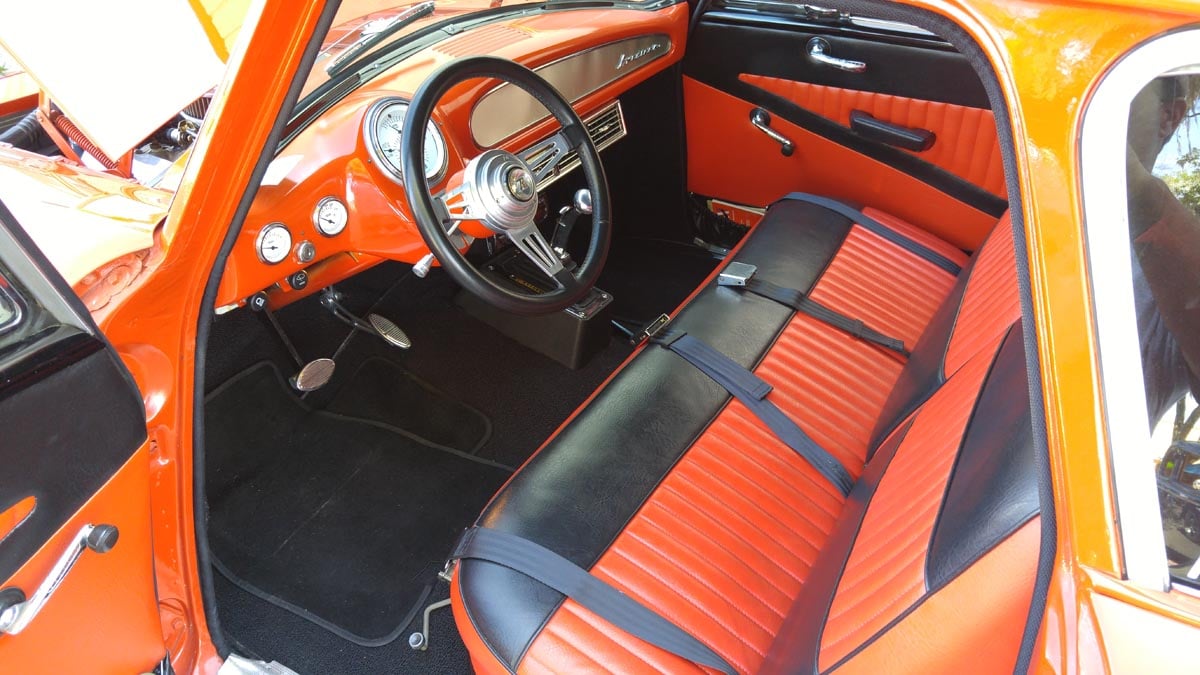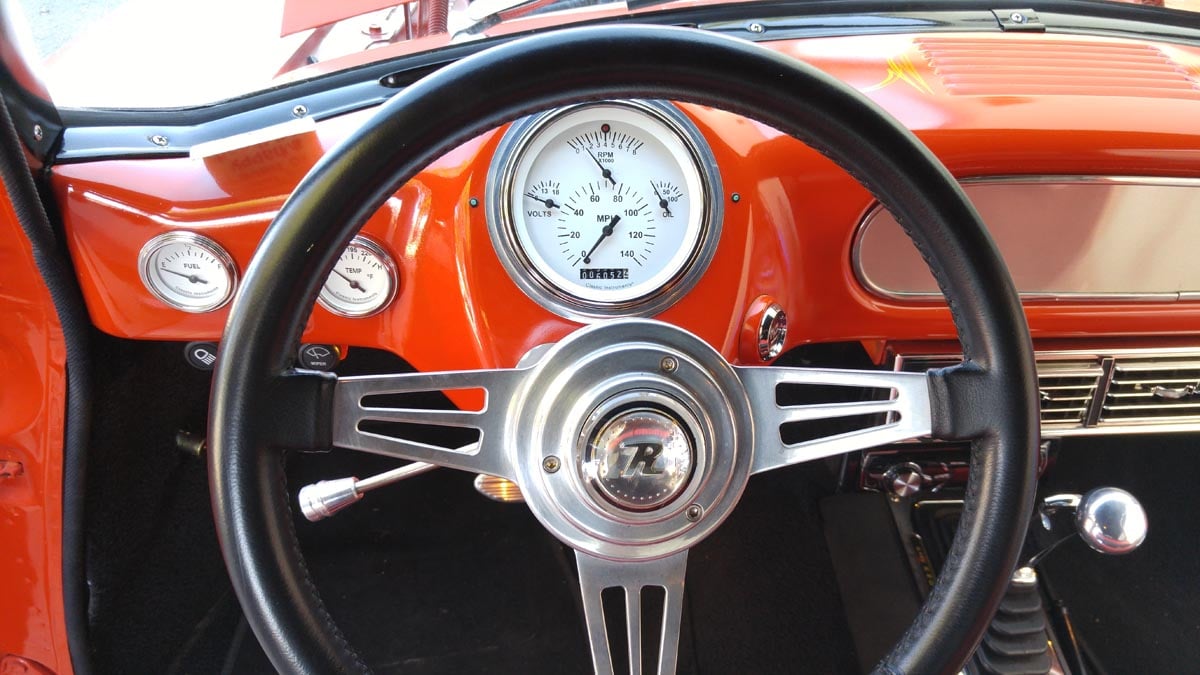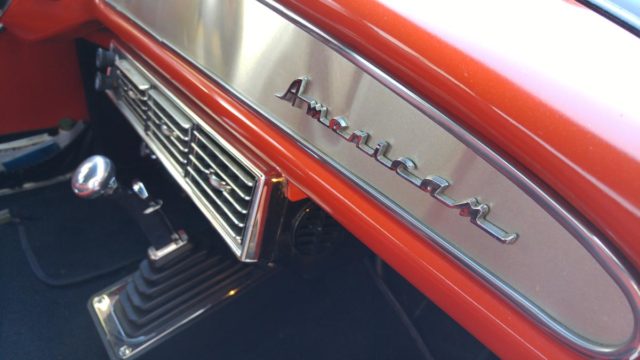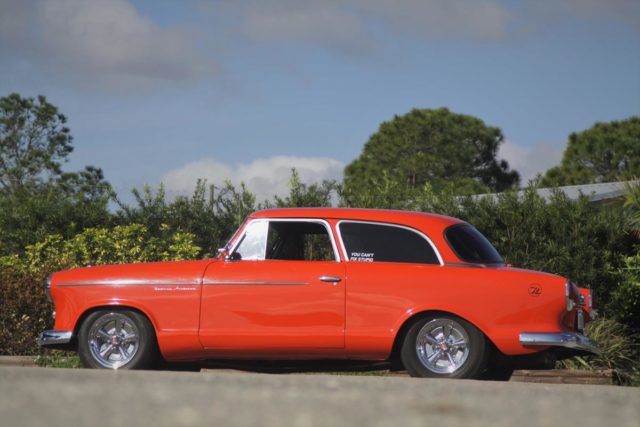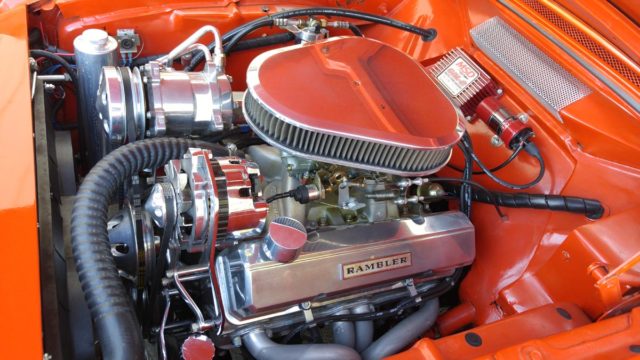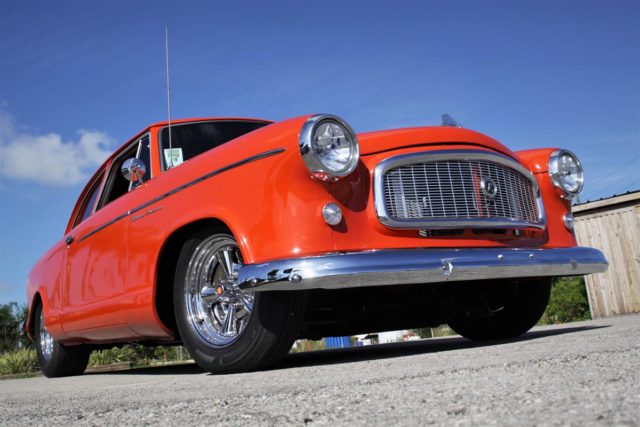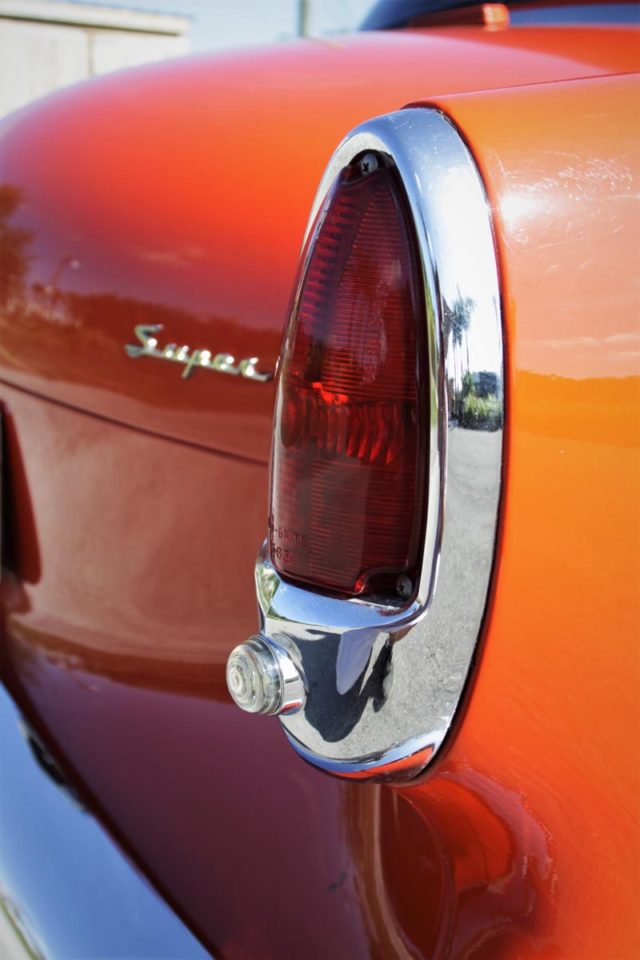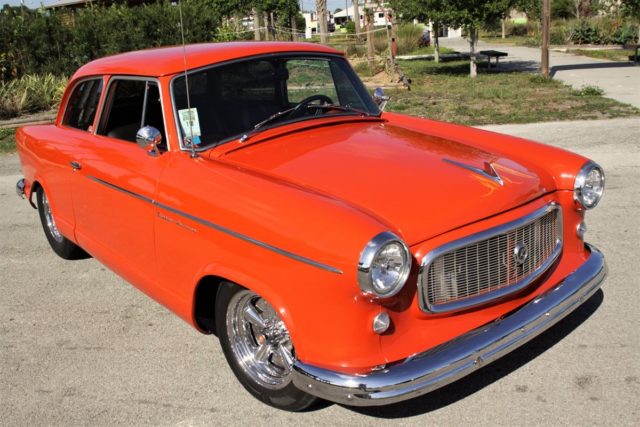There are many reasons why James Hansen, the owner of this way-cool looking ’60 Rambler American may have to answer the question, “What is it?” The main reason being that the car was produced almost 60 years ago.
Think about that. If you were born around the same time as this car, you’re likely getting your wrist measured for a gold watch and speaking to folks about what you’ll be doing with all the spare time you’ll soon have. If you were one of the folks walking the showroom looking to purchase one of these cars back then, well, chances are good you’re not reading this.
Interestingly, a lot of folks did show up on dealer lots to pick up one of these economical Americans. A big-brother to the Metropolitan, the American debuted in 1958. Based on a 100-inch wheelbase, the miserly little car was enamored for its fuel mileage and economical cost. These features tugged on the purse and heart-strings of middle-class American families as the country had just entered an economic recession.
Budgetary constraints aside – and thanks to congratulatory reviews by car mags and writers – the Rambler American was enjoying a hearty sales pace only two years after its introduction. James’ was one of the 120,603 Rambler Americans sold that year, in no small part for being known as the “lowest-priced car in America.”
There's not a lot of room in James' Rambler, but there is enough to fit everything you need and a few "luxuries" as AMC called them.
How Rambler Came To Be
The other reason that many folks today may not be able to identify with James’ car is because American Motors, the round-but-not-rotund little car’s parent company, was in the midst of an identity crisis itself. The Rambler nameplate had been around since 1900, when it was used by the Thomas B. Jeffery Company. But in more recent times, the name had been used by its predecessor, Nash Motors from 1950-1954.
When Nash and Hudson Motor Car Company merged in 1954, they formed American Motors Corporation, or AMC as many folks knew them. It was the largest corporate merger in U.S. history, and after the merger, Ramblers for both ’55 and ’56 production were sold under the Nash and Hudson nameplates. By 1957, the Rambler brand had risen to the top and all AMC offerings would be known simply as Ramblers by 1958.
After finding itself, Rambler was a dominant force in the small-car market, and James’ little Orange runabout was happily chugging along with its flathead six engine. Donned with a body-style that hearkened back to Nash’s Metropolitan and underpinnings that served as an economical solution for an upgrade, the classy little car with timeless economy whiled away the decades amid middle-class America.
Somewhere along the way, the rodding world began to pine for something different than a fat-fendered or low-boy offering, and these orphan cars were found ripe for the rodding. Much like a certain supermodel, their freckle-laiden face was finally realized for the beauty that was there all along.
The Performance End
Performance on the other hand, was a different story. That flathead six engine was never meant to be more than a persistent winner of the many Mobil-gas Economy Runs that helped sell so many cars back in the day. And, if you were one of those who shunned ultimate economy and checked the box for the upscale Custom version in 1960, you were immediately graced with another 35 horsepower (125 in all, thanks to a new over-head valve configuration) over the standard Super Flying Scot L-head version.
All of that makes interesting history for James though, as his Rambler has since been upgraded significantly. Now, a single, flat-head has been exchanged for a pair of Chevrolet Performance Fast Burn heads atop a ZZ383 crate engine that now puts out over 450hp, five times what the original engine produced.
To add to that number, a Holley [9] 650cfm carb, Edelbrock [10]Performer intake and free-flowing headers help to feed and evacuate all the additional fuel that James’ Rambler now uses. Surely it might not still be a stiff competitor in any of those Mileage Runs, but it sure does sound much better through those Borla [11] mufflers! James describes the drive without mincing words, “When you get in the car for a ride, you sit down, buckle up, hold on, and shut up!”
To help keep fuel consumption reasonable, James’ Rambler does use a 700R4 overdrive transmission, shifted with a Lokar [12] shifter and linkage. A 2,500 stall converter keeps the engine happy whether driving down the highway or waiting at a traffic light. And, depending on how James decides to leave said traffic light, the positraction differential and 3:73 gears in his GM 10-bolt rearend may come into play.
One of the things that original purchasers of Rambler Americans repeatedly commented on when surveyed, was how well the little car from Kenosha handled. Now remember, these were the folks that bought it because it was the least amount of money they needed to spend to get into a new car. While the low buy-in price may seem to limit the car maker’s expectation liability to customers, the carry-over suspension reportedly exceeded its buyers’ preconceived notions of road-handling ability, with over half of those surveyed by Popular Mechanics mentioning this fact.
Not to take anything away from Dick Teague and his team of engineers, but with the additional horsepower now found under that corner-less hood of James’ American, he wanted something that could keep up when the loud pedal gets pushed down. That meant a few upgrades were in order.
A Heidt’s [15] Superide front suspension was tied to the S10 rear suspension via the factory unit-body construction. A power rack-and-pinion steering assembly replaces the factory Armstrong unit (although power steering was an option in ’60), and a pair of disc brakes put the squeeze on speed up front with drums beating down the speedometer out back.
Some other upgrades can be found inside the cabin as well. Living in Florida, James understands the benefit of having A/C, which fits snugly under the dash in a self-contained unit. While the car is small in size, there are a lot of additional upgrades to the inside of James’ car. To start, literally, the car has been fitted with push-button starting.
Other creature comforts include electric wipers and an upgraded sound system. As an added bonus, James’ car is a “Super”, which means that for the over-all price of $1,874, the new buyer was blessed with “luxuries” such as padded armrests, a sun visor, cigarette lighter, a front seat featuring a foam cushion, roll-down side windows in the rear and additional interior lighting.
In the two years that James has owned the car, he’s enjoyed it both on the show field and on the highway. Putting miles on the new Classic Instruments [17]odometer comes easy for the hopped-up American, and thanks to folks like James, the Rambler nameplate will continue to represent at shows and cruises for years to come, even if many folks don’t know what the heck it is at first glance.
